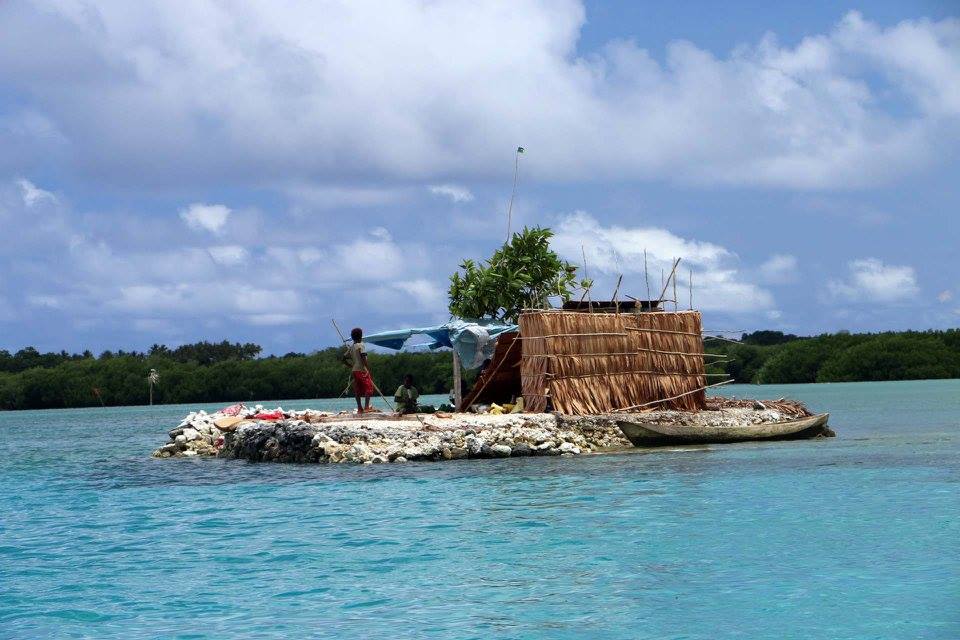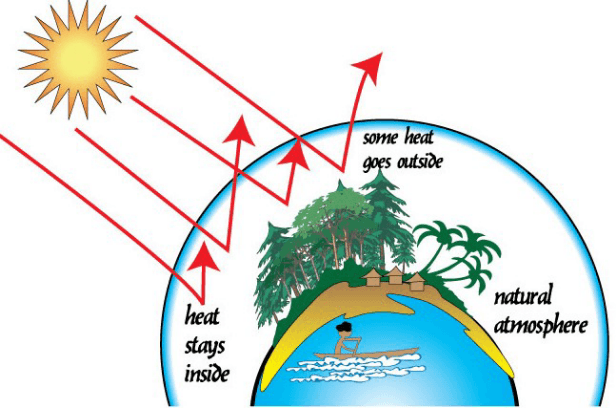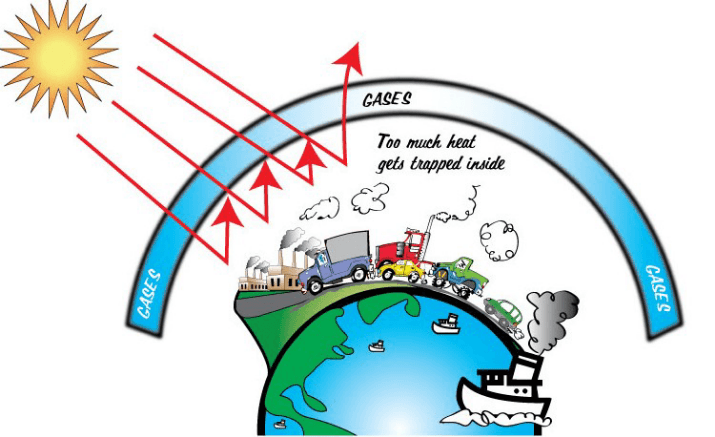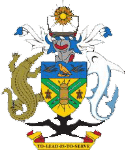Solomon Islands is rated as a Least Developed Country (LDC) by the World Trade Organization (WTO) and being a dual economy (subsistence and commercial), relies heavily on activities such as logging and its extractive industries such as mining to drive its economic growth aspirations.
According to a national report (Solomon Islands State of the Environment Plan 2008), the country’s development aspirations, coupled with rapid population growth and political difficulties have led to major environmental changes since Independence.
The report states the impacts of such changes are not widely realized, nor are they widely recognized. Additionally, most of these changes are carried out at levels that are unsustainable in the long run.
Introduce the negative impacts of climate change to the current national backdrop and the problem is compounded even further. These impacts – such as sea level rise and erratic weather patterns – threaten to undermine decades of development gains and future development trajectories.
According to the United Nations and other global and regional environmental and development bodies, many of the main drivers of poverty in developing countries such as the Solomon Islands are intertwined with climate change impacts.
This relationship between climate change impacts and development is also recognized by the Government of Solomon Islands and reflected through policy documents such as the National Development Strategy 2016-2035 and other government policies, plans and strategies.
At the national, the Ministry of Environment, Climate Change, Disaster Management and Meteorology (MECDM) is the key government body responsible for protecting the country's environment and natural assets while championing a path of sustainable development.
It's role is supported by sub-national bodies such as the country's provincial governments and other organisations and groups such as local communities who have an interest in seeing the country embark on a path towards sustainable development.
On such a journey, supporting adaptation measures to climate change impacts and the collection of relevant data for future expected impacts will be essential for advancing sustainable and equitable development in the Solomon Islands.
In this broader context, the need for Solomon Islands to employ options that lead to a path of green growth or sustainable growth becomes clearer.
At the International level, bodies such as the United Nations Development Programme (UNDP) is helping key government ministries within Solomon Islands – such as the ministries responsible for environment, climate change, disaster management, meteorology, development, forestry, water resources, energy and extractive industries – adapt to climate change impacts by integrating information on climate change risks and adaptation options into the country’s national and sub-national planning processes and budgets.
This support also promotes and implements integrated investments on the ground that safeguard livelihoods and protect development from possible climate change impacts in line with the UNDP’s Strategic Plan and the United Nation’s Sustainable Development Goals (SDGs).
For more information visit the Sustainable Development Knowledge Platform.
- Details
- Category: Climate Change
There has been an increase in greenhouse gases released into the atmosphere over the last 100 years because of actions by humans.
There are more cars, more factories and more trees being cut down. This is resulting in climate change and both land and sea surface temperatures are expected to be hotter in the future. The process of reducing the greenhouse gases in the atmosphere is called climate change mitigation.
Solomon Islands contributes minimal green-house gases into the atmosphere. However, being a Least Developed Country (LDC) as well as an island nation, it is quite exposed to the impacts and associated risks brought on by climate change.
Due to this, the Solomon Islands Government is encouraging countries with higher emissions to agree to a fair, ambitious and legally binding agreement to reduce green-house gases at the climate change negotiations as part of the United Nations Framework Convention on Climate Change (UNFCCC).
At the same time, the Solomon Islands Government is initiating measures to enhance the country’s energy efficiency and decrease Solomon Islands reliance on fossil fuels through solar and other renewable energy sources.
In the forestry sector, Solomon Islands is participating in the United Nations REDD program and is implementing a national REDD+ program through the Ministries of Forestry and Research (MFR) and Environment (MECDM).
REDD stands for Reducing Emissions from Deforestation and forest Degradation. The + (REDD+) goes a step further by promoting the importance of sustainable forest management (SFM), enhancement of caron stock and conversion of carbon stock in developing countries. It is an effort to create financial value for carbon stored in forests, thus turning the stored carbon into a tradable commodity under international emissions trading schemes.
The idea behind this being that the forests become more valuable as they and protected and enhanced, creating an incentive for sustainable forest management which will have a spill over effect of protecting and enhancing ecosystems, biodiversities and reducing soil degradation as well.
In Solomon Islands, the Ministry of Environment (MECDM) is the program's national focal point while the Ministry of Forestry and Research (MFR) is the program's key implementing Government Ministry.
- Details
- Category: Climate Change
According to the United Nations Development Programme (UNDP), impacts of climate change – such as increased droughts or more erratic storms – threaten to undermine decades of development gains and put at risk efforts to eradicate poverty.
Climate change will affect different parts of Solomon Islands in different ways. Coastal communities will face different problems to inland communities, and people living in towns will experience different changes to those living in remote rural areas.
Therefore, it is important that Solomon Islanders understand how climate change will affect different parts of the country, so that they can begin to plan for the future and so that the government is able to put in place strategies and plans to ensure continued sustainable development in the country.
In Solomon Islands, some of the impacts of climate change include:

Sea Level Rise (SLR)
According to reports, scientists predict that sea levels in the country will rise by as much as 1 meter by 2100, increasing the level of risks to low lying coastal communities throughout the country. Some of these risks include increased coastal erosion due to the rising sea levels as currently being experienced in areas such as Ontong Java, Roviana Lagoon and the Reef Islands in Temotu Province.
The rising sea levels also expose these communities to other risks such as coastal salt water intrusion, which is a serious problem for coral atolls and which leads to decreased levels of fresh water supplies and increased risks to communities’ food gardens and food security in general.
Increased Rainfall
Increased rainfall throughout the country may mean that flooding throughout the country during the wet season becomes more severe, leading to increased risks to flood prone communities and to their properties and food gardens as well as increased risks to the country’s infrastructures such as roads and bridges. These changes may also lead to some parts of the country becoming wetter while other parts become dryer (droughts). The seasonality of rainfall may also change.
Increasing Temperatures
A hotter weather, when combined with other climate change impacts such as increasing rainfall and increased pests and diseases, will all affect food security if nothing is done to adapt to or mitigate their combined effects. Additionally, increasing sea surface temperatures, rising sea levels and damage from tropical cyclones will affect the health of coral reefs and other marine ecosystems.
Unpredictable Weather
Rising temperatures may also lead to the increased likelihood of more intense and longer periods of rainfall, leading to an increased risk of flooding.
The likelihood of tropical cyclones developing may also increase along with increased storms and general bad weather out in the ocean, leading to increased risks to sea farers.
On land, risks due to these changes may include risks to human lives, properties, infrastructure damage, diseases and risks to certain economic activities such as tourism.
Increased Risk of Diseases
Climate change could also increase the incidence of insect, food and water-borne diseases. Heat stress, skin diseases, respiratory infections and asthma could also increase with climate change.
Internationally, world bodies and agencies such as the UNDP are working to help countries address the challenges of climate change. The UNDP remains the largest service provider in the UN system on climate change adaptation and mitigation.
The development programme, along with its regional partners such as the South Pacific Regional Environment Programme (SPREP) are supporting countries such as Solomon Islands to transition toward low-emission and climate-resilient sustainable development, while helping them to prepare for and build resilience to the impacts of climate change, and pursue low carbon development pathways that guarantee a cleaner, greener future and that are in line with the United Nations Sustainable Development Goals (SDGs).
Climate resilience
Climate resilience is the capacity for a socio-ecological system to:
- Absorb stresses and maintain function in the face of external stresses imposed upon it by climate change and;
- Adapt, reorganize and evolve into arrangements that improve the sustainability of the system, leaving it better prepared for future climate change impacts.
With rising awareness of climate change impacts by both national and international bodies, building climate resilience has become a major goal for these institutions. The key focus of climate resilience efforts is to address the vulnerability that communities, states, and countries currently have with regards to the environmental consequences of climate change. Currently, climate resilience efforts encompass social, economic, technological, and political strategies that are being implemented at all scales of society. From local community action to global treaties, addressing climate resilience is becoming a priority, although it could be argued that a significant amount of the theory has yet to be translated into practice. Despite this, there is a robust and ever-growing movement fueled by local and national bodies alike geared towards building and improving climate resilience.
Vulnerability
Vulnerability is an essential component of the climate resilience discussion because people that are the most likely to experience the majority of negative impacts of climate change are those that are least capable of developing robust and comprehensive climate resiliency infrastructure and response systems.
However what exactly constitutes a vulnerable community is still open to debate. The International Panel on Climate Change (IPCCC) has defined vulnerability using three characteristics: the “adaptive capacity, sensitivity, and exposure” to the effects of climate change. The adaptive capacity refers to a community’s capacity to create resiliency infrastructure, while the sensitivity and exposure elements are both tied to economic and geographic elements that vary widely in differing communities. There are, however, many commonalities between vulnerable communities.
Vulnerability can mainly be broken down into two (2) major categories, economic vulnerability, based on socioeconomic factors and geographic vulnerability.
Economic vulnerability
At its basic level, a community that is economically vulnerable is one that is ill prepared for the effects of climate change because it lacks the needed financial resources. Preparing a climate resilient society will require huge investments in infrastructure, city planning, engineering sustainable energy sources, and preparedness systems. From a global perspective, it is more likely that people living at or below poverty will be affected the most by climate change and are thus the most vulnerable, because they will have the least amount of resource dollars to invest in resiliency infrastructure. They will also have the least amount of resource dollars for cleanup efforts after more frequently occurring natural climate change related disasters.
Geographic vulnerability
A second definition of vulnerability relates to geographic vulnerability. The most geographically vulnerable locations to climate change are those that will be impacted by side effects of natural hazards, such as rising sea levels and by dramatic changes in ecosystem services, including access to food. Island nations are usually noted as more vulnerable but communities that rely heavily on a sustenance based lifestyle are also at greater risk.
Roger E. Kasperson and Jeanne X. Kasperson of the Stockholm Environmental Institute compiled a list of vulnerable communities as having one or more of these characteristics.
- food insecure
- water scarce
- delicate marine ecosystem
- fish dependent
- small island community
- Details
- Category: Climate Change
Adaptation to climate change is about finding ways for people to adjust to the environmental changes that are happening around them.
The aim of adaptation is to develop a population that is better able to survive and flourish in their environment, despite the challenges of climate change. Adaptation initiatives may be undertaken at a national, provincial or community level.
The Solomon Islands Government under the direction of the Ministry of Environment, Conservation and Meteorology developed the National Adaptation Programmes of Action (NAPA) which sets out the priority areas for climate change adaptation in the country.
While many of the projects and plans that came out of the NAPA process are national or provincial projects, adaptation can happen in communities by creating local adaptation plans.
People hear about climate change adaptation and think it is always a complex technical process – when in fact communities have been adapting to changes in their environment for centuries.

At the international level, organizations such as the United Nations Development Programme (UNDP) recognize that the impacts of climate change threaten to undermine decades of development gains and future development trajectories. Many of the main drivers of poverty in developing countries are intertwined with climate change impacts. Thus, supporting countries to adapt to these impacts and prepare for future expected impacts will be essential for advancing sustainable and equitable development.
UNDP’s support in climate change adaptation includes integrating information on climate change risks and adaptation options into national and sub-national planning processes and budgets; and promoting and implementing integrated investments on the ground that safeguard livelihoods and protect development from possible impacts.
UNDP is actively assisting over 100 countries with comprehensive risk management. This includes supporting 50 Least Developed Countries in Africa and Asia and more than 20 Small Island Developing States such as the Solomon Islands and around the world to implement on-the-ground actions to identify, reduce, manage and transfer climate induced risks. To date, over 2 million vulnerable people and communities have directly benefited from UNDP-supported initiatives in climate change adaptation.
Adaptation activities in Solomon Islands
Lau Lagoon, Malaita Province
Food can be grown above the ground to avoid contamination by saltwater.
Reef Islands, Temotu Province
In times of drought or if fresh water supplies have been affected by salt water, rainwater tanks can be used to collect freshwater. This is a good adaptation measure for communities on coral atolls who are affected by saltwater intrusion.
Mangrove replanting efforts at Buri, Ranongga, Western Province
The sea level is rising because of climate change and big waves are taking away land on the coast. Mangroves provide a network of roots that hold the earth together, preventing coastal erosion. The raised roots act as a trap for bits of sand and coral, building up the coast-line.
Lunga River, Honiara, Guadalcanal
Climate change may cause more heavy downpours and our rivers might flood more than normal. Gardens can be protected from damage by planting crops away from river banks. Houses should also be built back from rivers and coastlines.
Reef Islands, Temotu Province
Hotter weather, changes in rainfall, and increased pests will all affect food security. Extreme weather events like cyclones may damage crops and they could take weeks to recover. Using traditional food pres-ervation techniques can provide food for people in hard times.
Reef Islands, Temotu Province
Some climate change impacts will require technical assistance for adaptation measures but there are many things communities can do to prepare themselves. An example of a simple way of collecting rainwater which runs down trees—this water is used for drinking by pigs.
- Details
- Category: Climate Change
For a very long time, our Earth has had the perfect temperature for us to live. This is because of something called the ‘natural greenhouse effect’.
When heat from the sun comes to earth, some is absorbed by the oceans, soils and plants while some goes back up into the sky. Some of the heat that goes back up is trapped by a layer of gases called greenhouse gases. These gases make up part of a layer around our planet called the atmosphere. The atmosphere acts like a blanket keeping us warm. The greenhouse gases contained in the atmosphere include carbon dioxide, methane, nitrous oxide, and water vapour. These gases help to keep the world at a temperature that we can all live in by keeping some of the heat inside to warm the earth and letting some heat leave.

We need these gases to keep the earth at a temperature in which we can live happily. But when humans started building more cities, factories, cars and power plants and started cutting down more trees, we started making more greenhouse gases.
Over time, the atmosphere has become thicker and thicker and so more heat is being trapped and less heat passes through the atmosphere, causing the earth’s surface to become warmer.
This is called the enhanced greenhouse effect and the result is global warming, or climate change.
Temperature and the amount of greenhouse gases in the atmosphere have always changed over time but now we are seeing the temperature rise and the gases increase faster than in the last 800,000 years. These changes are not quick changes; they take time and happen slowly.
The temperature of the land and the sea will get hotter in the future. An international group of scientists called the Intergovernmental Panel on Climate Change (IPCC) says that temperatures in the South Pacific could increase by up to 3°C by 2100. Changes in temperature like this will have big impacts on the future of Solomon Islands in areas such as agriculture, water, health, fisheries and the coast; affecting livelihoods and threatening food security if left unaddressed.

- Details
- Category: Climate Change
